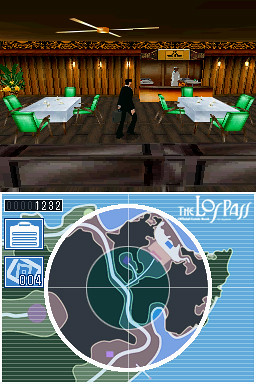People who've seen Brütal Legend in ads or are interested by the heavy metal aesthetic of the game may find themselves confused and perhaps alienated by what it actually is. The thing about Brütal Legend that's most likely to alienate players is the bait-and-switch that occurs as you're playing the game. The game starts out as an action-adventure game that admittedly feels rough around the edges, but what happens is that slowly but surely the game turns into something most players don't expect; a Real-Time Strategy game.
The game also introduces some unique concepts to the genre. During battle, you take control of one commanding avatar (rather then be an ominous influence on troops). Through them, you give orders such as attack and defend, create merchandise booths, play solos to change to tide of battle, and directly attack enemy units.
The Double Teams, on top of the direct control of an avatar are what really made the RTS portion of the game for me. The ability to have a direct influence on the combat regardless of your troops clicked with me the first time I did it. I can easily see why other people would be turned off by it, though; by having the player control a hero character, the player loses the ability to command larger fleets, command multiple squads at once (more on that in a bit), and for the die-hard player of a more diverse RTS game, Brütal Legend doesn't offer much that would pry them away. Still, I had enough fun playing online that I could easily see myself going back to it.
This lack of effective multitasking isn't present too often, since most online matches will end before either player has had much of chance to upgrade their stage, but in battles with more than two players, it can be hard to coordinate properly. This carries over into the single-player as well, where battles usually last longer due do a more defensive AI.
The odd thing about the single-player is that it buries the RTS portion of the game under several layers of action/adventure. Playing the rest of the game, you start to feel that most of the other components are shallow means to an end. The character combat, for example, isn't wildly creative. The animations feel stiff, the combos are slow, and for the most part, you're mashing one button over and over again. Guitar spells add some variety, but the few combos that mix it with regular attacks aren't very useful. You're either going to mash one button or the other.
The game also borrows some other aspects from the action/adventure genre. The single-player portion of the game plays out much like any game in the action/adventure genre would. You play through key missions to advance the story, and open up optional missions that give you Fire Tributes (which can be used to buy upgrades for your character). Most of these missions are novel the first time around, but there are only a handful of unique scenarios, which are repeated several times over. You can avoid the brunt of these missions, sure, but for the completionist, it isn't really an option.
At heart, Brütal Legend is a really good RTS game and a decent action/adventure game. It mixes these two games in ways that might not jive with everyone, but both of these games are ultimately worth playing. Fans of Tim Shafer's previous work will be right at home scouring every nook and cranny, and the player who puts enough time into the RTS will find an surprisingly experience that may be a bit too simple, but ends up being a lot more fun once you put your expectations aside and enjoy what Double Fine is offering, rather than the game you thought it was going to be.






 The Chronicles of Riddick: Assault On Dark Athena: There were too many factors against the original game (Escape From Butcher Bay, which also happens to be included here) for anyone to be not be surprised by how good it was. What made that game so great was that it changed up the emphasis of the game constantly (segments where you were fetch-questing for prisoners and closterphobic stealth-action segments segeued into each other quite well), and all of it was fun to play. It was a good game while also adding back story to the movie on which it was based (and let's face it, that wasn't too good.)
The Chronicles of Riddick: Assault On Dark Athena: There were too many factors against the original game (Escape From Butcher Bay, which also happens to be included here) for anyone to be not be surprised by how good it was. What made that game so great was that it changed up the emphasis of the game constantly (segments where you were fetch-questing for prisoners and closterphobic stealth-action segments segeued into each other quite well), and all of it was fun to play. It was a good game while also adding back story to the movie on which it was based (and let's face it, that wasn't too good.)





